Do-it-yourself installation and connection of the washing machine
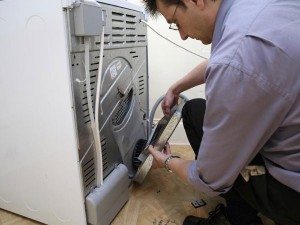 After reading this article, you will learn how to install and connect a washing machine yourself. But before we get down to business, it's worth mentioning an important detail. Before you begin installing the machine, you need to find out whether the manufacturer of your model of household appliances prohibits independent installation and connection.
After reading this article, you will learn how to install and connect a washing machine yourself. But before we get down to business, it's worth mentioning an important detail. Before you begin installing the machine, you need to find out whether the manufacturer of your model of household appliances prohibits independent installation and connection.
In some cases, the warranty may be void. Therefore, be sure to find out more about this from the manufacturer or seller.
Most often, people prefer to order washing machines with home delivery. In this case, you must carefully review the purchase before confirming its receipt by signing the documents. Be sure to unpack the box or ask the delivery staff to do so. You need to carefully inspect the body of the washing machine for damage and scratches.
Some careless employees may hit the machine when transporting or lifting it to the floor. If you find dents, peeling paint or other traces of unfair transportation of household appliances, you can safely ask for a replacement. You paid for a new item. Accordingly, you should receive a new and undamaged one.
But most often purchases are delivered in good condition. And if everything is in order with you, then you can calmly sign and release the delivery people. If something suddenly happens, then you should have the phone number of the store where you purchased your machine. By calling this number, you will solve your problems.
The first stage of installing a washing machine
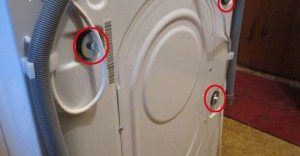 And so, we have already released the delivery workers, now we move on to the next part of our work. Namely, removing the transport bolts. They are located on the back of the washing machine body.
And so, we have already released the delivery workers, now we move on to the next part of our work. Namely, removing the transport bolts. They are located on the back of the washing machine body.
These bolts are necessary to secure the tank. And they are used so that during transportation the tank does not dangle inside and does not damage anything inside the machine. Until they are removed, the tank of the machine will not be able to spin. And even moreover, turning it on in this state can lead to damage!
Therefore, we can remove them without any problems using a wrench or pliers. We plug the holes that appear with plastic plugs. They are included in the kit along with instructions and other things. The bolts can be saved. They may be needed if you decide to move or transport your washing machine somewhere. In this case, you will screw them back in and protect the machine from possible damage during transportation.
Before turning on the washing machine for the first time, we strongly recommend that you carefully study the instructions supplied with it. This will help you avoid possible damage due to negligence. And it will allow you to prolong the operation of this household appliance.
Choosing a suitable place
Whether you install the washing machine yourself or call a professional, you will need to prepare the area. The machine must correspond to the selected position in volume. Simply put, she has to fit in there. In some cases, it is worth choosing a washing machine based on the amount of free space you have. If there is not enough free space, then it is necessary to measure in advance all the dimensions of the prepared space and build on them. If you have a lot of free space, then you don’t have to worry and buy any model you like.
Connecting the washing machine to the network
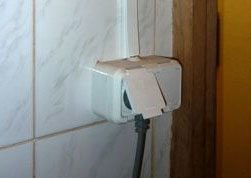 This issue must be approached very responsibly. For safety reasons, you must have a separate outlet for your washing machine. The socket must have special protection against water. In addition, it must be grounded. Modern models of household appliances, as a rule, have current protection and grounding. But it's still better to be safe. The length of the machine wire is usually about one and a half meters. Therefore, the outlet should be quite close. Of course, you can get by with a special extension cord with a waterproof joint. But it is considered to be less secure than a power outlet.
This issue must be approached very responsibly. For safety reasons, you must have a separate outlet for your washing machine. The socket must have special protection against water. In addition, it must be grounded. Modern models of household appliances, as a rule, have current protection and grounding. But it's still better to be safe. The length of the machine wire is usually about one and a half meters. Therefore, the outlet should be quite close. Of course, you can get by with a special extension cord with a waterproof joint. But it is considered to be less secure than a power outlet.
Some models can output a small voltage to the body of the machine (if it is not grounded). Most often, light electric shocks are not dangerous. But, nevertheless, very unpleasant. Therefore, we recommend that you protect yourself and use grounding.
Do I need to connect hot water or will cold water suffice?
If the model allows, then you can connect hot water. But experts say that there are not many advantages from its use. After all, every automatic machine has a heating element that will easily increase the water temperature to the required level. But there are disadvantages to using hot water:
- Firstly, in many cities hot water is more contaminated than cold water. This means that you will need to clean the filter yourself more often or call a professional.
- Secondly, due to the increased hardness of this water, it will be necessary to spend more washing powder. Otherwise, things won’t wash.
If your washing machine does not have the ability to connect to hot water, then you don’t have to think about this issue.
Connect to water
 The simplest option for connecting a washing machine is to connect it to the old place. That is, if you already had a machine, but you replaced it with a newer one. In this case, you already have a ready-made tap into the pipe with the ability to shut off the water. We simply screw the hose to it, which is already included in the kit, and set the tap to the open position. In this way, we will check the quality of our connection and prepare the machine for washing.
The simplest option for connecting a washing machine is to connect it to the old place. That is, if you already had a machine, but you replaced it with a newer one. In this case, you already have a ready-made tap into the pipe with the ability to shut off the water. We simply screw the hose to it, which is already included in the kit, and set the tap to the open position. In this way, we will check the quality of our connection and prepare the machine for washing.
If there are no ready-made pipe bends, then it will be a little more difficult. You will first have to make the necessary insertion, install the outlet, and only then screw on the inlet hose. By the way, if your inlet hose turns out to be short, then don’t worry, you can easily find a longer one in plumbing stores. And it is quite inexpensive.
Experts recommend keeping the drain tap closed and turning on the water supply only during washing. This will save you from possible problems with water leaks.
Connecting the washing machine to the sewer

To connect the washing machine to the sewer, you need to buy a siphon. And after installing the siphon, we will attach our drain hose to it. The hose must be securely fastened to prevent water leakage.
You can also connect the drain to a cast iron pipe. You can see how to do this in the photo below.
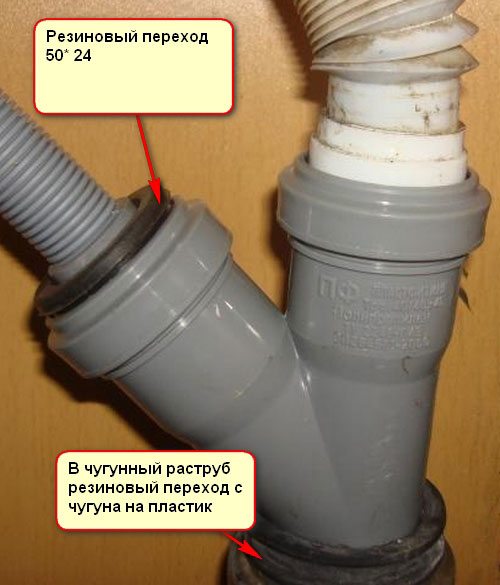
There is also an option with draining water into the bathroom. See photo:
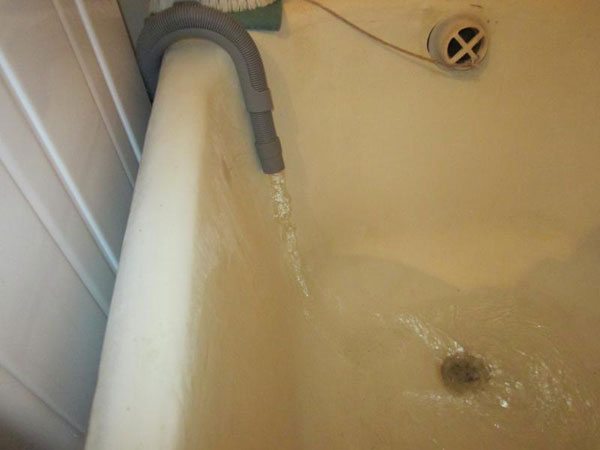
After you have connected your washing machine to all the necessary communications, it needs to be leveled. To do this you will need a level.
The whole process is quite simple. Place a level on the machine, look in which direction the skew is and remove it. In order to change the tilt of the body in one direction or another, you need to increase or decrease the height of the legs.To do this, you just need to twist them in one direction or another.
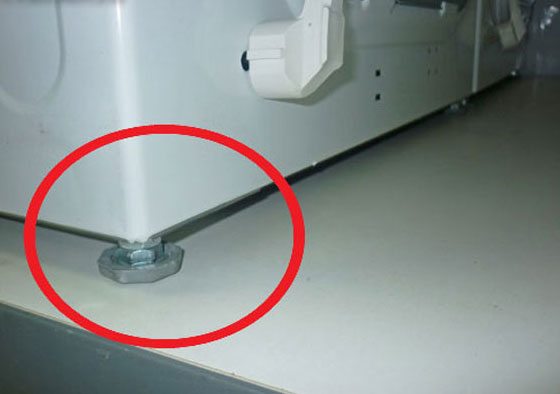
After our machine was installed, it was time for a dry test wash. That is, without things. Add some washing powder and start washing. When the cycle is over, you can safely throw in your dirty laundry and enjoy the fruits of your new washing machine.
Below you can watch the whole process in video format. Happy installation!
Interesting:
5 reader comments
Add a comment Cancel reply
Categories
Washing machine repair


For buyers

For users

Dishwasher

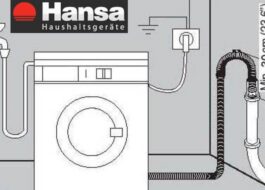

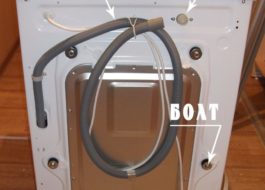


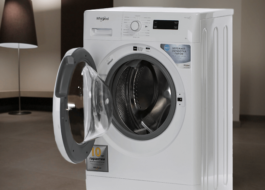










The best site among similar ones on this topic is definitely.
There is an answer to any question, or even step-by-step video instructions.
Well done guys, thank you for being here.
Well done! Intelligent articles on using washing machines.
Something is not clear. The article says that to drain, you need to install a siphon, but in the video everything is connected directly to the sewer without any extras. Plus, the instructions for washing machines indicate that the drain hose must be installed at a certain height from the floor. But the video seems to ignore this. In general, many questions remain regarding the installation of the washing machine.
If you have eyes and a brain, it's not difficult to figure out the setup. If you are looking for reasons not to connect it, you will find them.
Where can I find the dimensions between the supporting elements and the dimensions on the bottom of the washing machine?